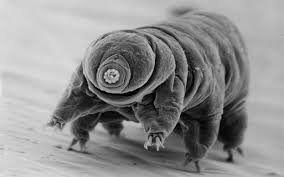Interesting Tardigrade Facts: 1-10
1. Tardigrades are small, really tiny, actually micro animals with segmented bodies. They are usually water-dwelling creatures but can be found in a myriad of places like Antarctic ice, deep in ocean beds to a depth of 14,000 ft, high up in Himalayas at a height of 20,000 ft, tree barks, moss and more!
2. They have 8 legs (4 pairs) and each leg has 4 to 8 claws that resemble the claws of a bear. This is why they have earned the name ‘Water Bear’ but they are also known by the name ‘Moss Piglet’ because they are also found in moss.
3. Tardigrades were discovered for the first time in 1773 by a German pastor by the name Johan August Ephraim Goeze. In 1776, the animal received the name Tardigrada by an Italian biologist named Lazzaro Spallanzani.
4. More than a 1,150 species of Tardigrades have been identified so far since 1778.
5. Scientists classify these micro-animals as extremophiles because they are capable of surviving in extreme conditions. Even less than 10% of such conditions are considered hostile and deadly for humans.

6. Tardigrades are usually 0.5 mm long but they can grow a little longer and reach up to 1 mm.
7. Tardigrade babies are all born with a full range of adult cells. They grow not by cell division. Their cell simply expand in size.
8. Tardigrades have existed for a very very long time. They have actually outlived the dinosaurs. Tardigrades have been around for 530 million years. Well, that’s what the fossil records say.
9. Most of the Tardigrade species are oviparous. In simple layman language, females lay egg inside their shed cuticle and then males cover those eggs with their sperm. Only a very few among the known Tardigrade species are not oviparous and females in those species have internal fertilization.
10. Tardigrades have sharp dagger-like teeth in their tubular mouth that they use to spear other living organisms and algae. They are usually feed on bacteria or plant cells (known as bacteriophagous and phytophagous respectively) but there are a few other species that are predatory by nature and feed on other smaller animals..

